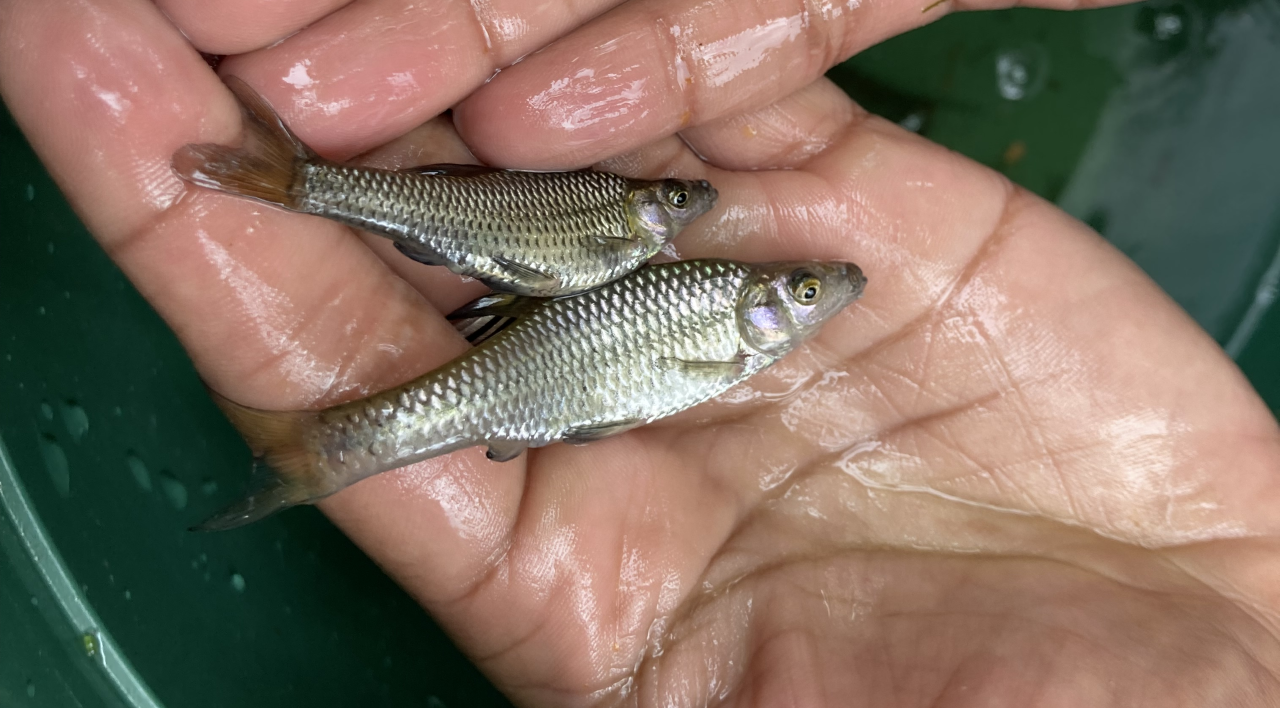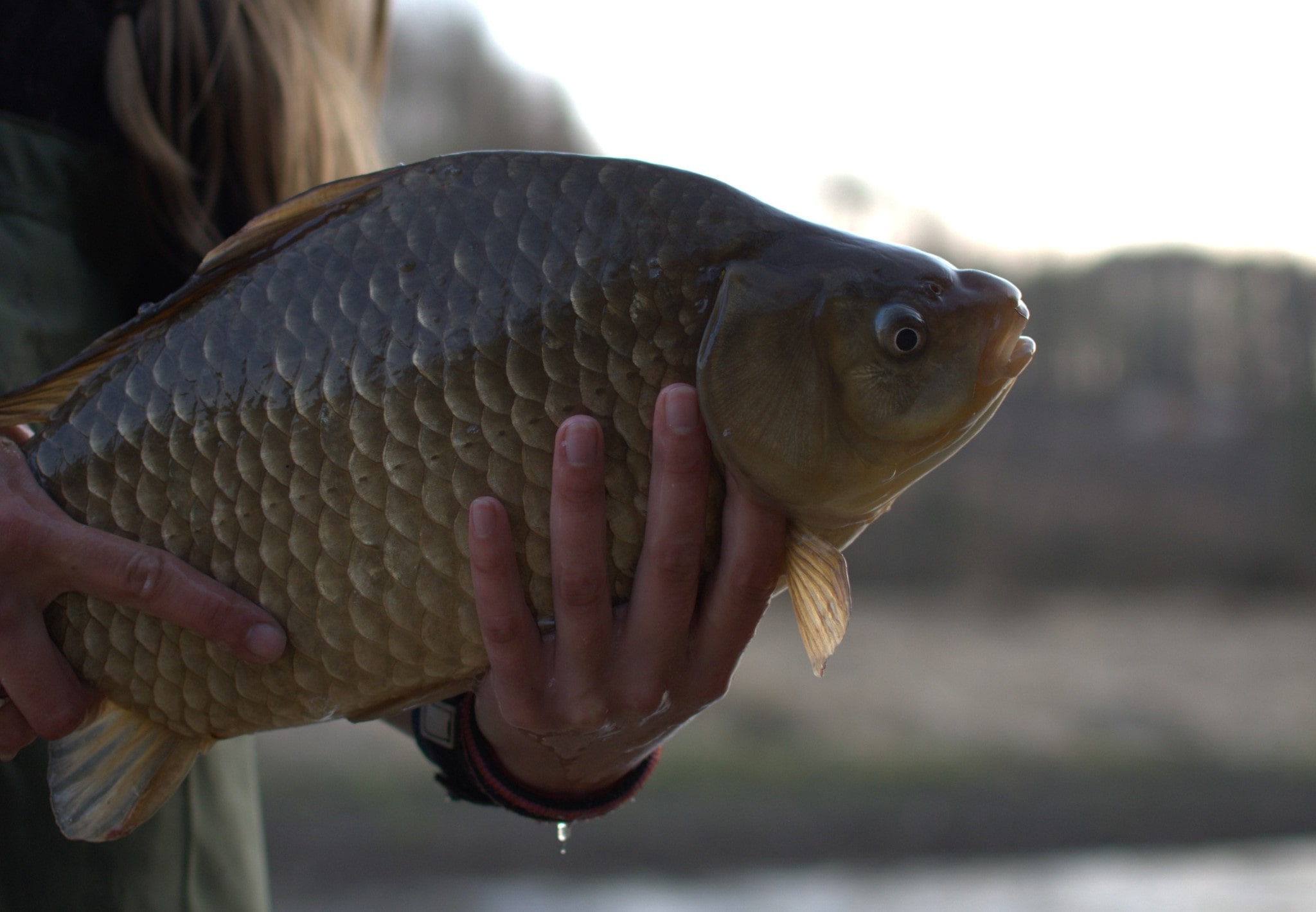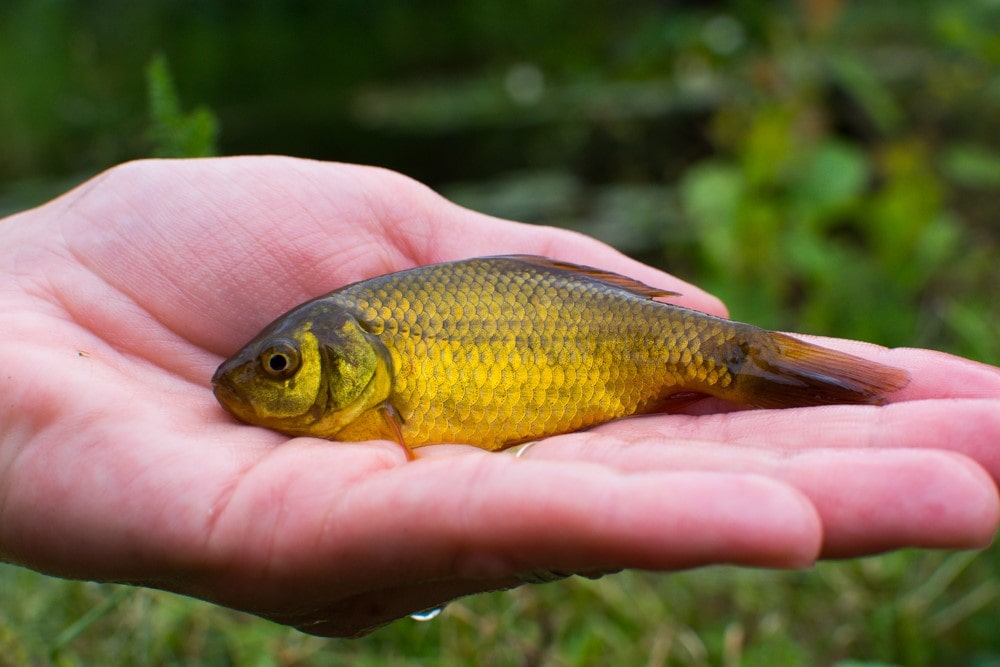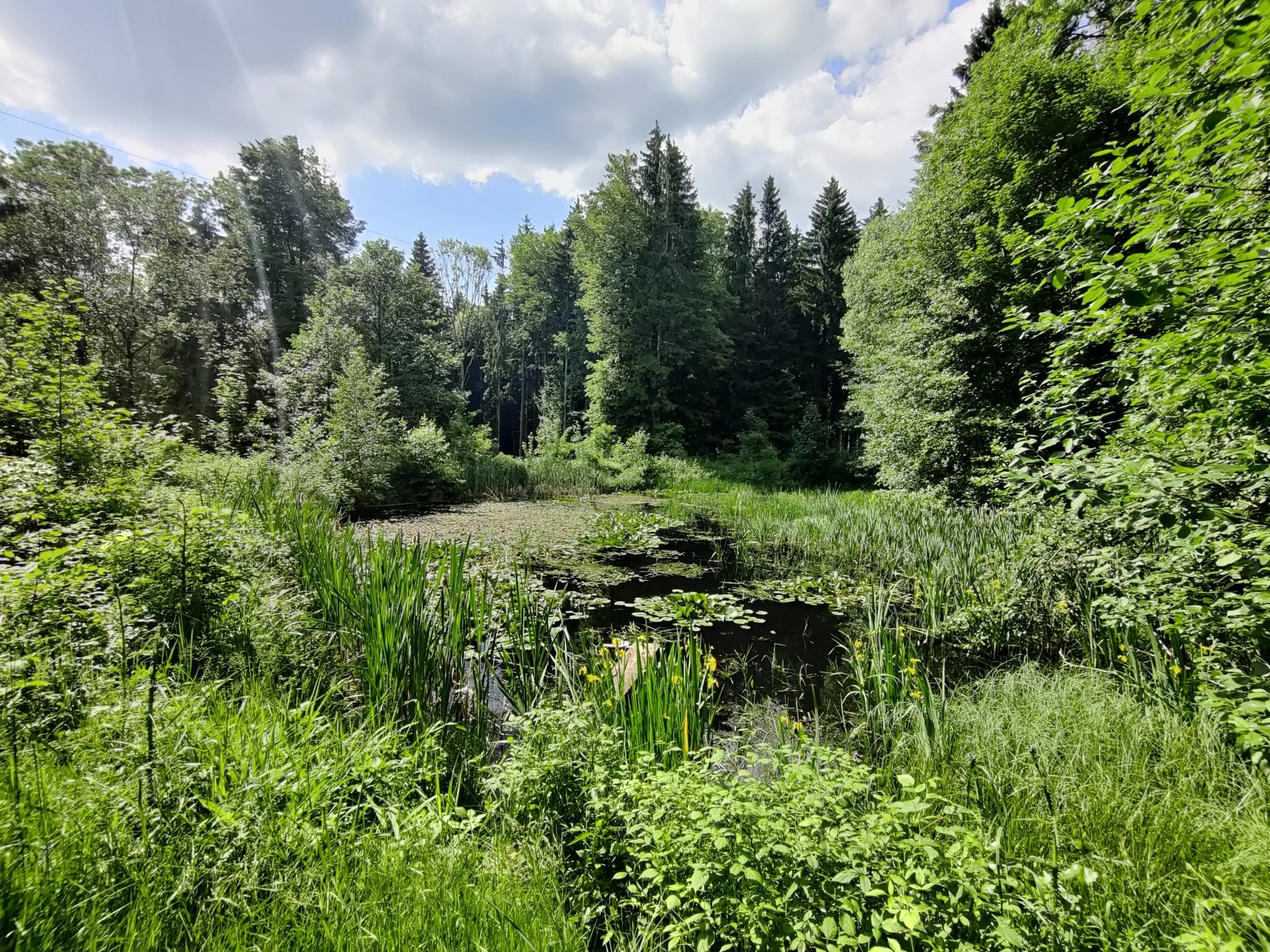There are basically three causes for the decline of the crucian carp: straightening of rivers, loss of annual fluctuations in their flows, intensification of management in village ponds and invasive fish species.
The first threat is the loss of its habitat due to stream modifications. As a result of the regulation of rivers (reconstruction and strengthening of banks), typical sites of its occurrence have begun to disappear. Oxbows and pools in the floodplain of rivers have started to disappear from the landscape. This is because old channels gradually disappeared, but new ones did not appear - the regulation of rivers and their flows by dams has eliminated this possibility (the regulated channel is stable, no more oxbows appear in the landscape). These changes have been taking place very intensively since the Middle Ages. Other interventions, such as the draining of wetlands and 'unproductive' small bodies of water for agricultural activities, have exacerbated the decline.
Another cause of threat is the invasive gibel carp, which is competitively displacing the crucian carp. Hybridisation between the crucian carp and the invasive gibel carp and with other non-native species from the genus Carassius is also a problem, although this does not appear to be as problematic according to our surveys. Hybridisation between the crucian carp and common carp is less common, but these hybrids are infertile.
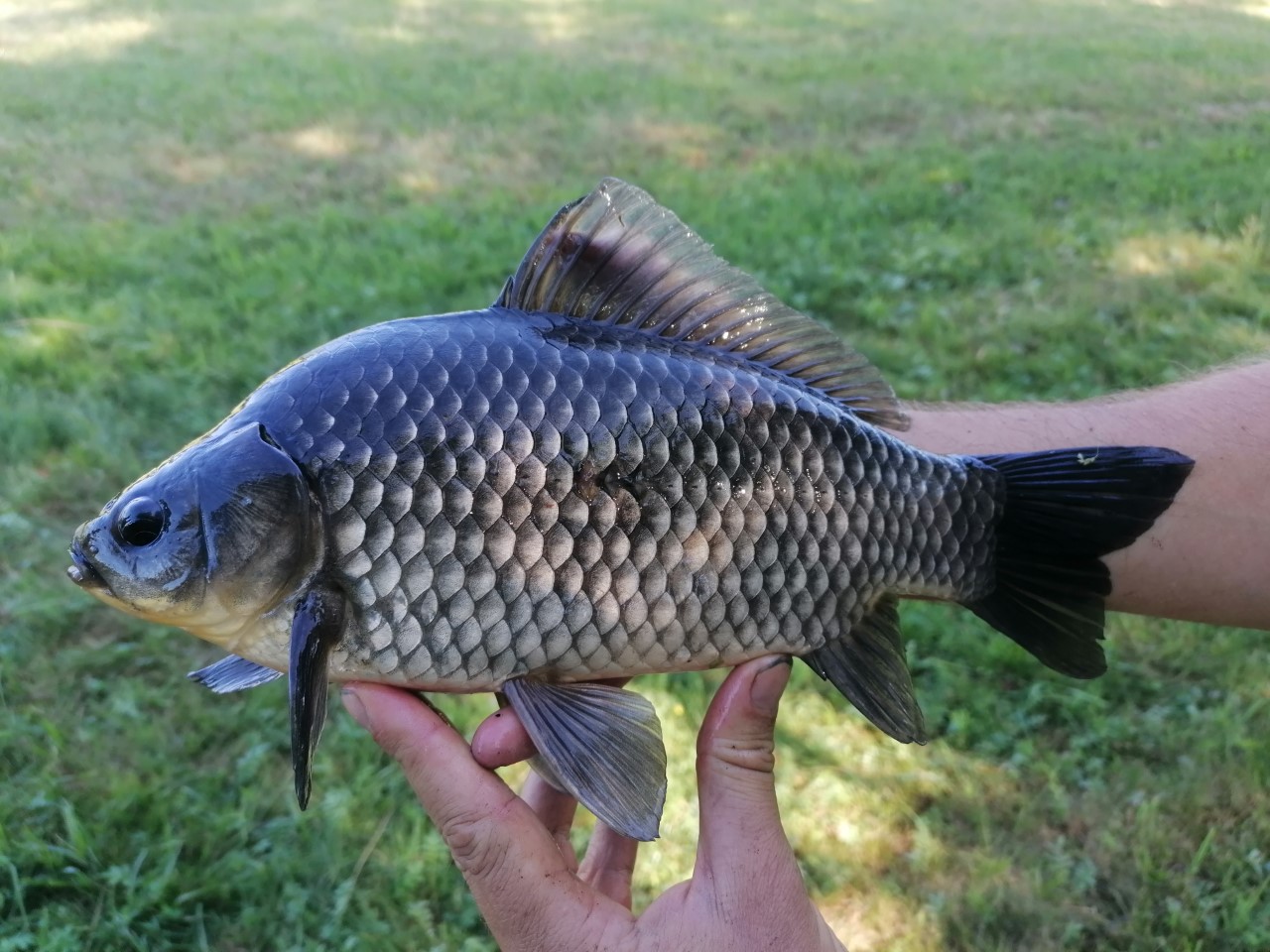
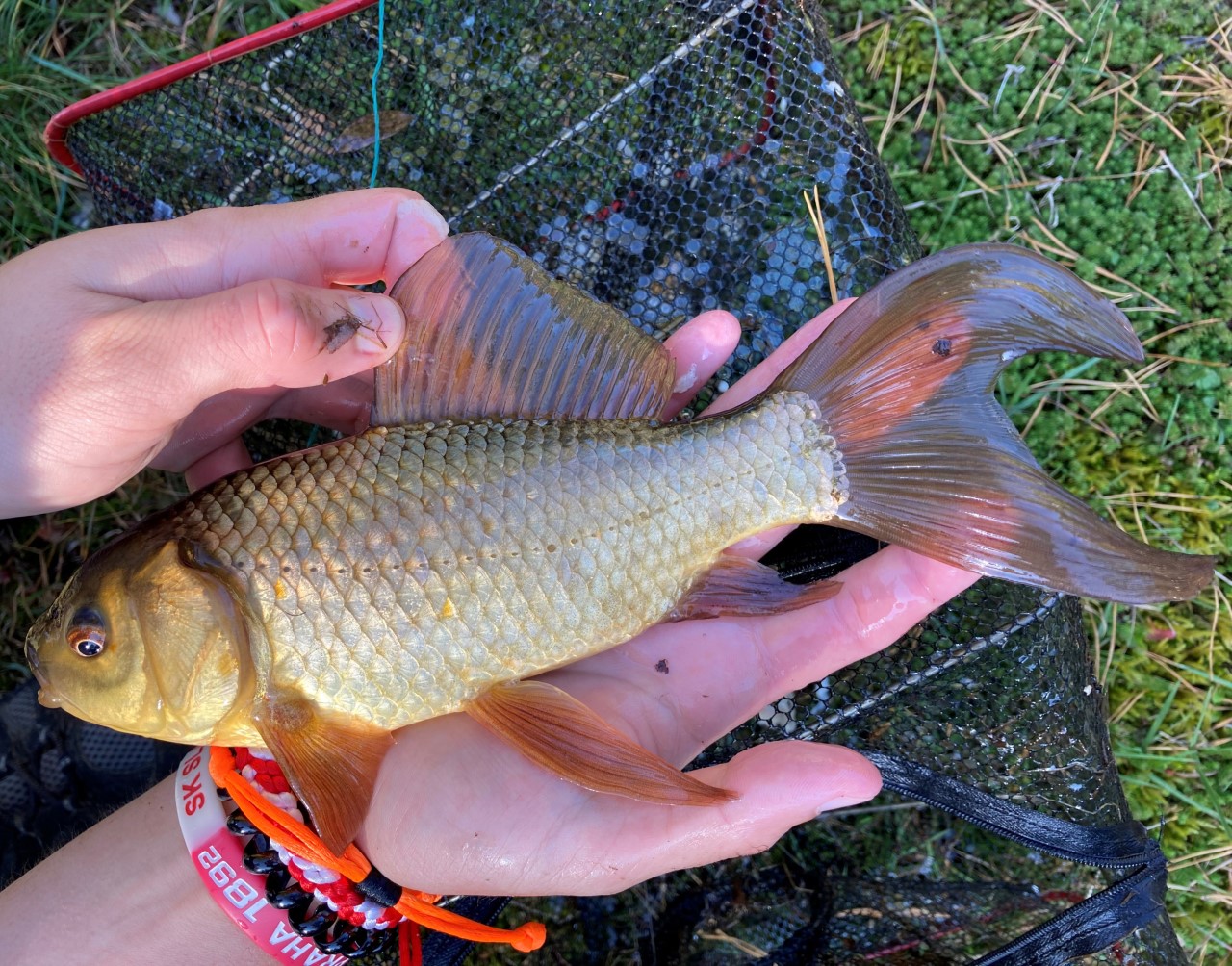
Invasive species
Invasive species are non-native species introduced into a new habitat by humans, either intentionally or accidentally. They represent one of the biggest threats to freshwater ecosystems worldwide. They pose a risk to aquatic plants, invertebrates, amphibians and other fish species. They competitively displace native species and can transmit diseases.
Invasive species are introduced into new habitats with the transport of attractive fish species important to fisheries and angling, along with or as bait fish alone, with ornamental plants and ornamental fish. Releases from garden ponds or escapes from aquaculture are also a problem.
The crucian carp is threatened in our territory mainly by the gibel carp, goldfish and the topmouth gudgeon. Also, a new invasive species of the Czech Republic, the Chinese sleeper, is able to completely displace the crucian carp from its habitat.
Invasive fish species in the Czech Republic that overlap in their environmental requirements with the crucian carp:
- The gibel carp (Carassius gibelio)
- The goldfish (Carassius auratus)
- The ginbuna (Carassius langsdorfii)
- The topmouth gudgeon (Pseudorasbora parva)
- The Chinese sleeper (Perccottus glenii)
- The Yellow and brown Bullhead (Ameiurus lies a A. nebulosus)
- The common sunfish (Lepomis gibbosus)
The gibel carp (Carassius gibelio)
The gibel carp inhabits various types of shallow standing water and lower reaches of rivers. It prefers rich vegetation and is very tolerant of low oxygen and pollution. It is currently distributed over a very wide area from western Europe to the far east. Unlike the crucian carp, its range also includes central Asia, through Mongolia to China.
Depending on the environment, the gibel carp have a silvery brown, blue or dark grey back; the side is silvery or golden with a light belly. It can also be all light with a silvery sheen. Scales tend to be darkly fringed, dorsal and caudal fins dark grey, paired fins lighter.
The gibel carp is considered one of the most successful invasive fish species in Europe's freshwater ecosystems. It has several characteristics that predispose it to be a successful coloniser of new territories. The first is its large reproductive capacity, it can spawn up to three times a year, and it has a very fast growth rate (up to 4 times faster than the crucian carp). Another reason for its invasion success is its ability to reproduce asexually by gynogenesis. There may be no males in the population at all and the population is composed of females only. Due to this type of reproduction, the release of only a single female gibel carp can result in rapid population growth.
The gibel carp acts as a strong competitor to the crucian carp. It makes better use of food sources from its surroundings and also consumes more plant matter and detritus compared to it.
The gibel carp from a small pond, where it forms a small-bodied individuals similar to the crucian carp. Depending on its abundance at the site, the maximum size of individuals in these populations is usually between 12 and 20 cm.
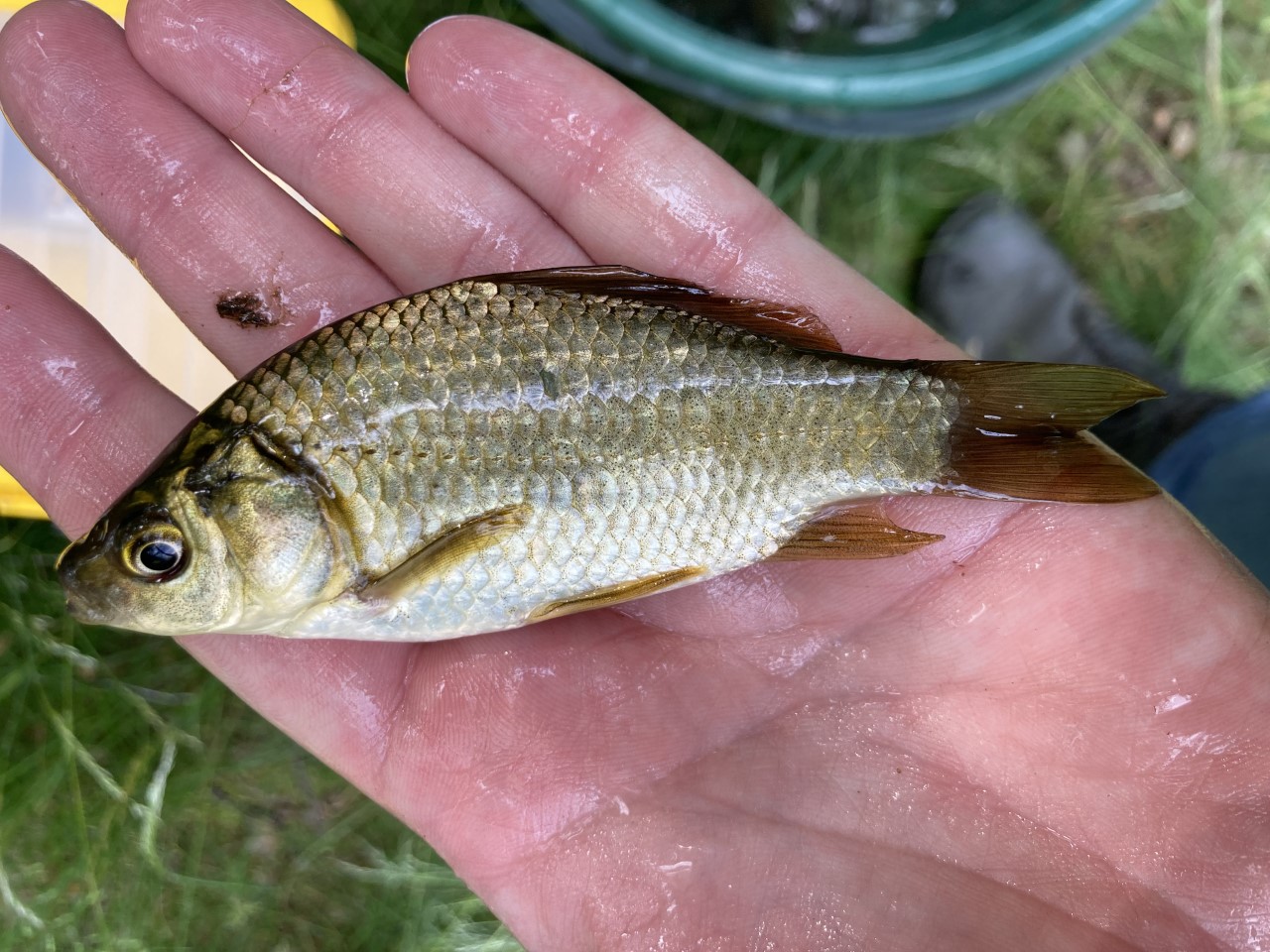
The goldfish (Carassius auratus)
The goldfish is known in Europe in its domesticated form. However, their spawning also produces "non-coloured" individuals. These specimens are silver-grey, golden brown to bronze in colour.
They prefer vegetated still waters. It is often stocked in large numbers in ornamental water bodies. The first records of captive breeding date back to the tenth century in China. Breeding, and subsequently deliberate breeding, became widespread and part of Chinese culture. Later, the hobby began to spread around the world. Today, goldfish is one of the most popular aquarium fish. In many places where goldfish were kept as ornamental fish, they have escaped into the wild where they have become feral. Because of its presence in Europe, people did not initially notice the invasion of the gibel carp during the early years of its migration across the Danube, as the non-coloured form of the goldfish is very similar.
There are opinions that the goldfish does not pose such a biological risk to newly colonised areas as the gibel carp, but its higher numbers also lead to increased environmental turbidity, loss of aquatic plants and reduced invertebrate diversity. Hybridisation with goldfish is a direct threat to the crucian carp populations.
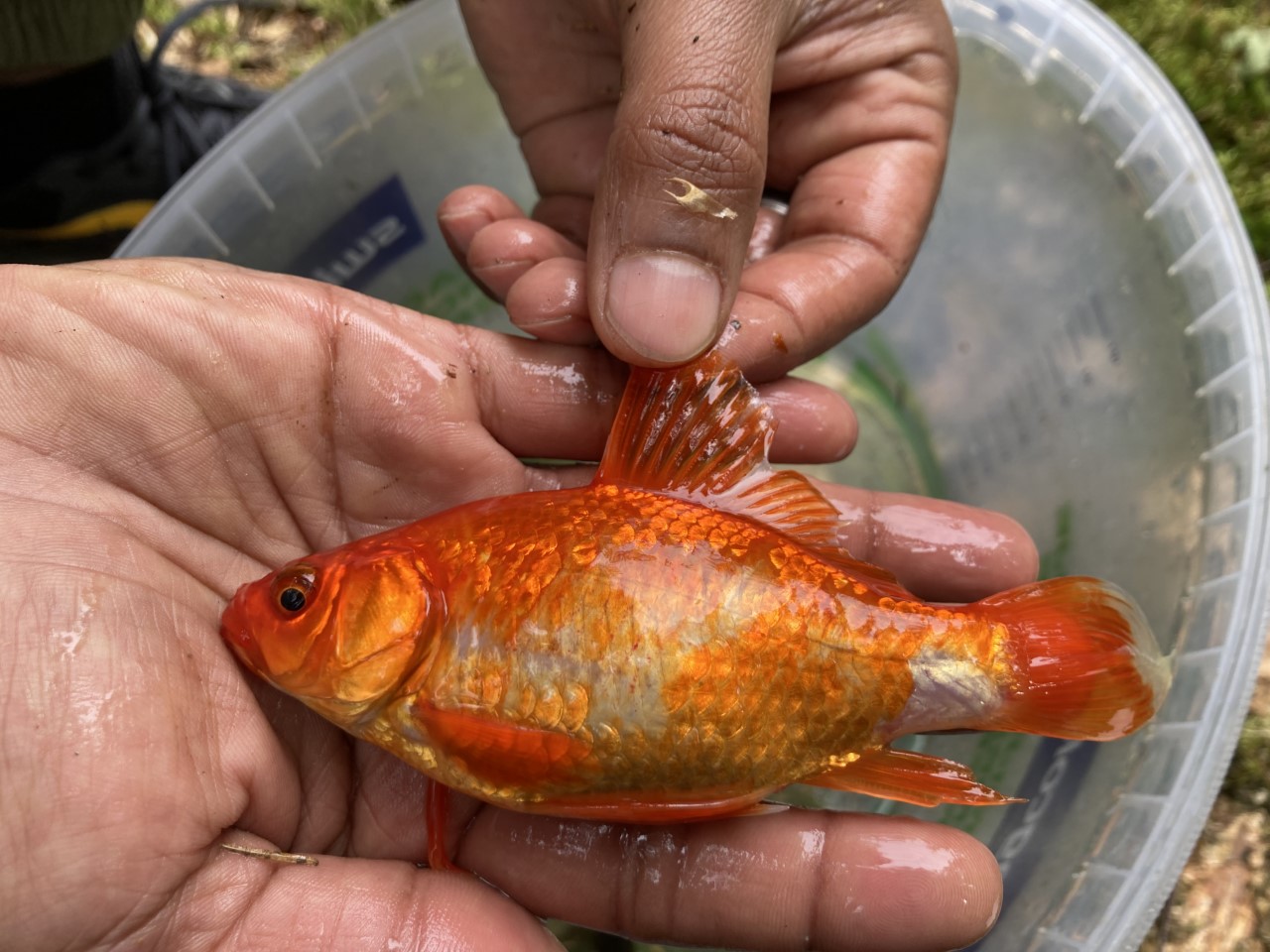
The ginbuna (Carassius langsdorfii)
This species is native to the Japanese archipelago, where it is found abundantly throughout the territory. Relatively recently, the occurrence of the ginbuna has been confirmed in several places in Europe, for example near České Budějovice or in the Elbe basin. It inhabits stagnant waters of middle and lower reaches of rivers, lakes and ponds. There is only limited information on its occurrence and biology in Europe.
The topmouth gudgeon (Pseudorasbora parva)
The topmouth gudgeons are small fish up to about 10 cm in size with an elongated body. Typical upper extendable mouth and the dark stripe along the lateral line in juveniles. Their original range is East Asia, but they are now distributed almost worldwide and cause high economic and ecological losses. The topmouth gudgeon most commonly inhabits ponds where it acts as a foraging competitor to our native fish species. If they overpopulate in a locality, they can nibble the fins and skin epithelium of other fish species.
The breeding, possession, sale and transport of the topmouth gudgeon is prohibited by law (EU Regulation 1143/2014 on the prevention and management of the introduction and spread of invasive alien species). It may also not be used as a food or bait fish and may not be returned to the water if caught.
